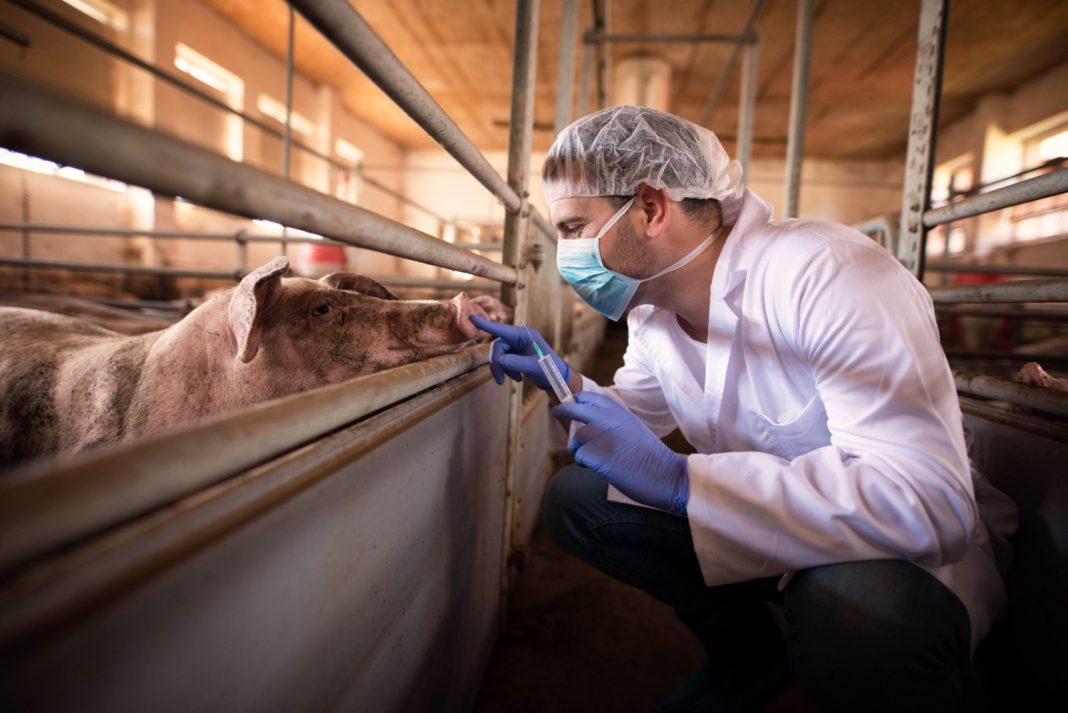CROOK COUNTY, USA—The U.S. Department of Agriculture reported Wednesday, October 30, 2024, that the H5N1 bird flu virus has been detected in a pig on a farm in Oregon.
This is the first known case of this virus in a pig within the United States.
This revelation, which surfaced following a recent outbreak of H5N1 among poultry on the same farm, raises concerns about the possible implications of cross-species viral transmission and the potential for genetic reassortment that could impact public health.
The infected pig, one of five on a small backyard farm in Crook County, was euthanised for necropsy after testing positive.
According to Ryan Scholz, Oregon’s state veterinarian, animal tissue samples revealed the virus “throughout their body.”
Though the pig exhibited no symptoms of illness, its close cohabitation with infected poultry led to a precautionary euthanasia to enable a thorough examination.
Two other pigs underwent necropsies but showed no signs of infection.
However, swabs taken from a “teacup mini” pig, also housed alongside infected chickens within a chicken coop, returned a positive result for H5N1.
This second pig has since been euthanised, and results of tissue testing are pending.
Pigs have long been regarded by experts as potential “mixing vessels” for influenza viruses.
They can host avian flu strains, like H5N1, as well as human flu viruses, setting the stage for potential genetic reassortment.
Should such a reassortment occur, it could give rise to a hybrid virus with enhanced transmissibility among humans.
“If it doesn’t spread from pigs to pigs and it just happened on that one farm, it’s not a big deal,” cautioned Florian Krammer, a flu virologist at Mount Sinai’s Icahn School of Medicine in New York.
“If it starts to spread from pigs to pigs, then it’s much more of a problem. If it ends up in large pig populations in the U.S. similar to cows, I think this would be a disaster.”
Though the USDA has generated a genetic sequence of the virus found in poultry on the farm, the sequencing findings have not been publicly released.
Dr. Scholz stated that Oregon’s Department of Agriculture has been informed that the H5N1 strain detected in the infected pig likely originated from wild birds rather than from the dairy-associated strains observed in other states.
The USDA’s report specified that this farm, which is under a quarantine order, is a backyard setup with poultry and a mix of other livestock, including sheep and goats.
Given the high susceptibility of pigs to multiple bird flu viruses, standard protocol for managing H5N1 outbreaks in poultry often includes testing any pigs in the vicinity.
The USDA statement further highlighted that the affected farm’s livestock “shared water sources, housing, and equipment,” creating potential cross-species pathways for transmission.
“Pigs are highly susceptible to flu viruses, both human and avian,” explained Dr. Thomas Peacock, a virologist at Britain’s Pirbright Institute, specialising in animal viral illnesses.
“They are full of influenza viruses that in the past were human seasonal influenza viruses or pandemic influenza viruses. So they have a really, really rich genetic material in them.”
He emphasised the risk that such genetic material presents, noting that viruses circulating among pigs are sometimes capable of reacquiring the capability to infect humans.
While experts urge caution, they also recognize the need for more data.
Dr. Richard Webby, director of the World Health Organization’s Collaborating Center for Studies on the Ecology of Influenza in Animals, noted that previous studies had suggested H5N1 bird flu could infect pigs but struggled to sustain transmission within pig populations.
He cited USDA research from earlier this year showing that recent H5N1 variants circulating in the U.S. have demonstrated a greater capacity to infect pigs than previous versions.
“To me, that [would] ratchet up the risk substantially from where we are,” he said.







